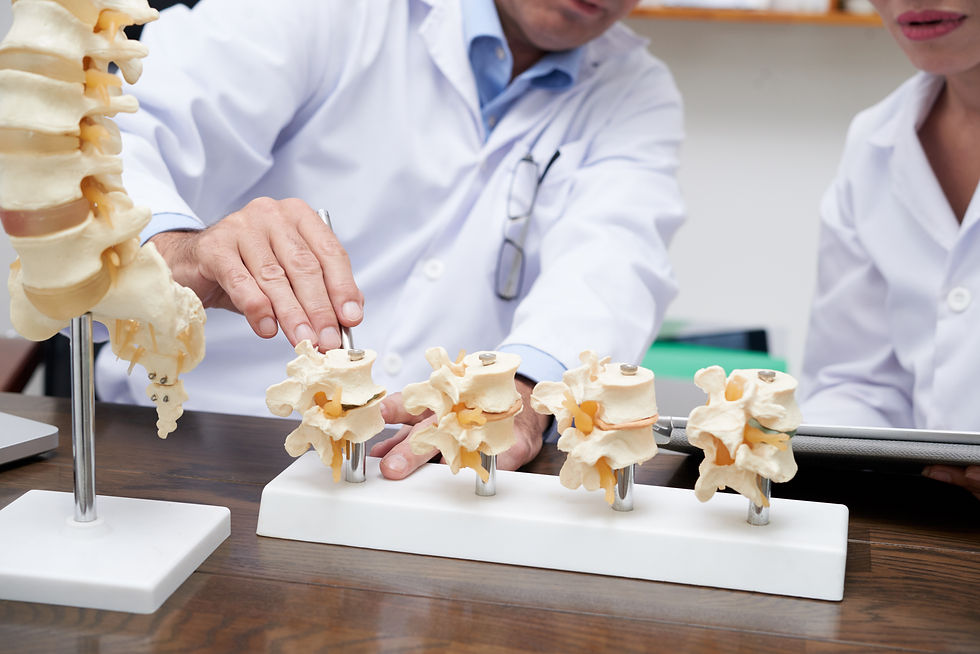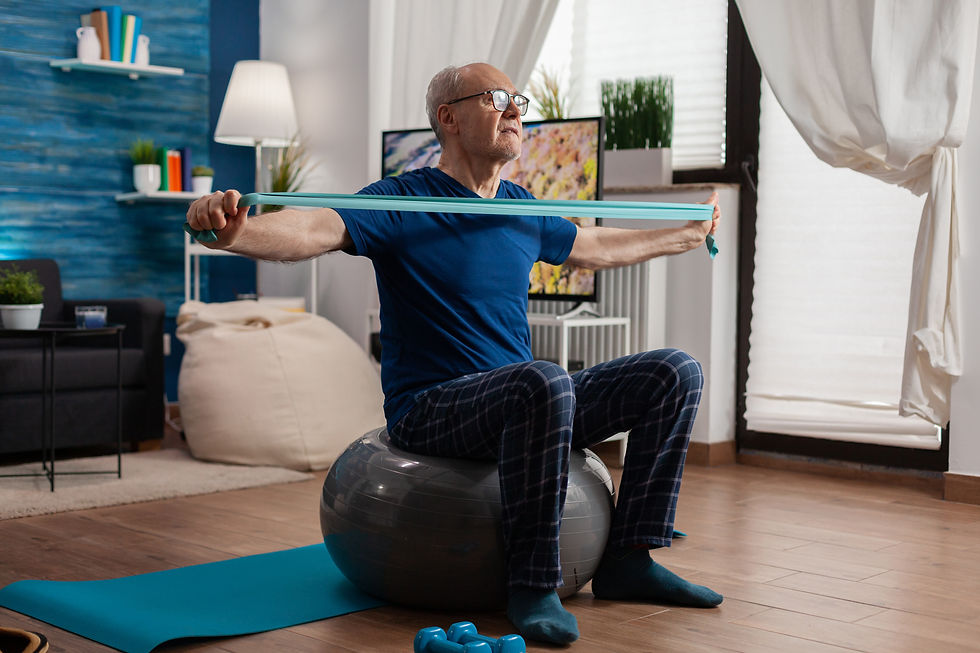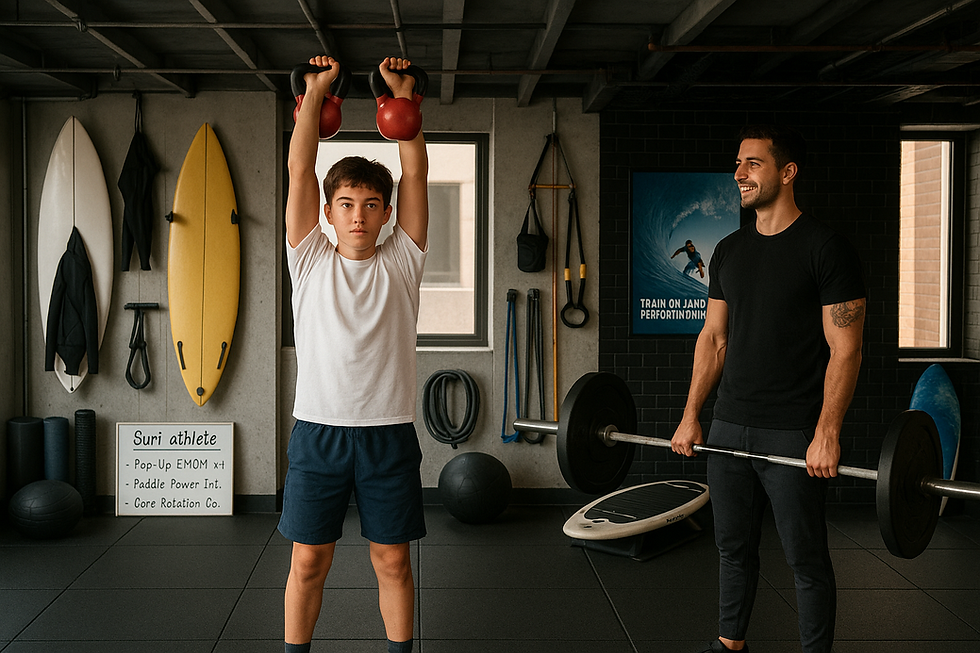Safely Strengthening Bones with Exercise for Longevity
- Jordan Pollard

- Jun 9
- 3 min read

Bone health is vital for longevity, especially as we age. Many people mistakenly believe osteoporosis and osteopenia inevitably limit physical activity, particularly weight-bearing exercises. However, recent research reveals not only that exercise can be safe, but that specialised strength training significantly improves bone health, even for individuals diagnosed with these conditions.
Understanding Bone Health and Aging
Osteoporosis and osteopenia are conditions characterised by decreased bone mineral density (BMD), increasing the risk of fractures. As we age, our bones naturally lose density, making proactive management essential. Maintaining strong bones means sustaining mobility, independence, and quality of life while minimising the risk of debilitating fractures.
Bone mineral density is a significant predictor of longevity. Research shows:
High-normal BMD levels (T-score ≥ -1.0): Associated with significantly improved longevity and reduced fracture risk.
Average BMD levels (T-score between -1.0 and -2.5): Indicate average life expectancy but necessitate proactive management strategies.
Osteopenia (T-score between -1.0 and -2.5): Moderately increased risk of fractures, requiring careful intervention to mitigate long-term complications.
Osteoporosis (T-score ≤ -2.5): Substantially elevates fracture risk, adversely impacting longevity and quality of life if inadequately managed.
The T-score Classifications values above are from the World Health Organization (WHO) and how they define bone mineral density (BMD) categories.
Myth Busting: Why Avoiding Weight-Bearing Exercise Is Harmful
Doctors traditionally advised individuals with osteoporosis or osteopenia against heavy lifting due to fracture risks. Unfortunately, this overly cautious approach inadvertently leads to inactivity, causing muscle atrophy, reduced bone mass, and greater fragility. Current evidence-based guidelines emphasise that controlled, supervised resistance and impact exercises safely stimulate bone growth & density, enhance neuromuscular coordination, and significantly reduce fall and fracture incidence, improving overall health.
Principles of Effective Exercise for Osteoporosis and Osteopenia
Bone responds to mechanical stress through a process called remodelling. Osteocytes, mature bone cells that sense and regulate strain, detect this mechanical loading, signalling osteoblasts, cells that build new bone tissue, to increase bone formation. Conversely, without adequate mechanical stress, osteoclasts, cells that break down bone, become more active, leading to bone loss. Effective exercises that stimulate the new growth of bone tissue include resistance training (e.g., lifting weights), impact exercises (e.g., jogging or jumping), and balance-focused activities (e.g., yoga or tai chi).
Safety First: Guidelines for High-Risk Individuals
Given the fracture risk associated with osteoporosis and osteopenia, safety protocols must be strictly observed. Clinical supervision by a qualified clinical exercise physiologist is essential for accurately assessing risk (via DXA scans, fracture history, and physical assessments) and for implementing tailored exercise prescriptions. Structured exercise programs should emphasise correct biomechanics, controlled intensities, progressive loading, and vigilant monitoring to minimise injury risk.
Building Your Bone-Strengthening Exercise Routine
Clinical guidelines suggest the following exercise parameters:
Resistance Training: Conducted 2-3 times weekly, with 8-12 repetitions per exercise at moderate intensity, targeting major muscle groups.
Weight-bearing Aerobic Activities: At least 150 minutes of moderate-intensity or 75 minutes of vigorous-intensity aerobic activity per week.
Balance and Coordination Exercises: Implemented 2-3 times weekly, emphasising neuromuscular control and fall prevention.
Specific exercise recommendations include adapted strength training exercises (e.g., modified squats, leg presses), impact-loading activities (e.g., brisk walking, stair climbing), and balance-oriented disciplines (e.g., yoga, tai chi).
How to Get Started Safely
If you or someone you know is at risk, the first step is to consult with a qualified professional specialising in bone health. An exercise physiologist or other clinical professional will conduct comprehensive assessments and tailor an exercise regimen suited to your specific needs. Gradually incorporating these routines under expert supervision ensures safety and promotes sustainable progress.
Frequently Asked Questions (FAQs)
Can I exercise if I've already had a fracture? Yes, though you should really consider, initially, professional supervision to ensure safety and appropriateness.
What equipment do I need? Basic gym equipment, resistance bands, and body-weight exercises suffice under guided programs.
How quickly can I see results? Most individuals begin seeing measurable improvements within 6-12 months, though will start to feel the benefits in 5-8 weeks.
Conclusion
Proactive, supervised exercise routines are crucial for managing osteoporosis and osteopenia, enhancing bone strength, and reducing fracture risks. Improved bone mineral density can significantly enhance longevity and overall quality of life. Take the step towards better bone health today, because everyone deserves to Live Younger for Longer.



Comments